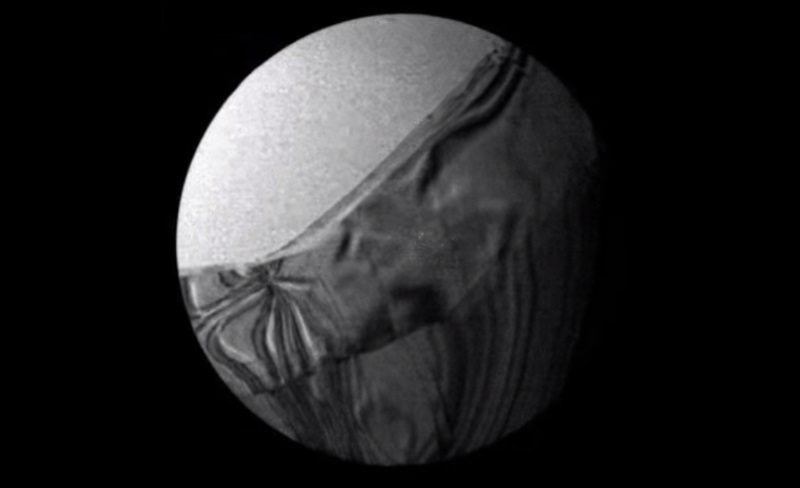- Home
- Science
- Science News
- Scientists Record Heat Moving Through Materials at Speed of Sound
Scientists Record Heat Moving Through Materials at Speed of Sound

The groundbreaking videos were made using a state-of-the-art ultrafast electron microscope called FEI Tecnai Femto, which is capable of examining the dynamics of materials at the atomic and molecular scale over time spans measured in femtoseconds (one millionth of a billionth of a second).
According to the study, published recently in Nature Communications, the researchers used a brief laser pulse to excite electrons and very rapidly heat crystalline semiconducting materials of tungsten diselenide and germanium.
They then captured slow-motion videos (slowed by over a billion times the normal speed) of the resulting waves of energy moving through the crystals.
"As soon as we saw the waves, we knew it was an extremely exciting observation," said lead author David Flannigan from the University of Minnesota. "Actually watching this process happen at the nanoscale is a dream come true," he added.
Flannigan said the movement of heat through the material looks like ripples on a pond after a pebble is dropped in the water.
The videos show waves of energy moving at about 6 nanometres (0.000000006 meters) per picosecond (0.000000000001 second).
Mapping the oscillations of energy, called phonons, at the nano-scale is critical to developing a detailed understanding of the fundamentals of thermal-energy motion.
The recordings could help develop better, more efficient materials for electronics and alternative energy.
In many applications, scientists and engineers want to understand thermal-energy motion, control it, collect it, and precisely guide it to do useful work or very quickly move it away from sensitive components, according to Flannigan.
"Because the lengths and times are so small and so fast, it has been very difficult to understand in detail how this occurs in materials that have imperfections, as essentially all materials do. Literally watching this process happen would go a very long way in building our understanding, and now we can do just that," he said.
Get your daily dose of tech news, reviews, and insights, in under 80 characters on Gadgets 360 Turbo. Connect with fellow tech lovers on our Forum. Follow us on X, Facebook, WhatsApp, Threads and Google News for instant updates. Catch all the action on our YouTube channel.
- Samsung Galaxy Unpacked 2025
- ChatGPT
- Redmi Note 14 Pro+
- iPhone 16
- Apple Vision Pro
- Oneplus 12
- OnePlus Nord CE 3 Lite 5G
- iPhone 13
- Xiaomi 14 Pro
- Oppo Find N3
- Tecno Spark Go (2023)
- Realme V30
- Best Phones Under 25000
- Samsung Galaxy S24 Series
- Cryptocurrency
- iQoo 12
- Samsung Galaxy S24 Ultra
- Giottus
- Samsung Galaxy Z Flip 5
- Apple 'Scary Fast'
- Housefull 5
- GoPro Hero 12 Black Review
- Invincible Season 2
- JioGlass
- HD Ready TV
- Laptop Under 50000
- Smartwatch Under 10000
- Latest Mobile Phones
- Compare Phones
- Redmi Note 15 5G
- Redmi Note 15 Pro 5G
- Redmi Note 15 Pro+ 5G
- Lava Play Max
- Poco C85 5G
- Honor Magic 8 Lite
- Jolla Phone
- Realme P4x 5G
- Asus ProArt P16
- MacBook Pro 14-inch (M5, 2025)
- OnePlus Pad Go 2
- Poco Pad M1
- Just Corseca Skywatch Pro
- Honor Watch X5
- Acerpure Nitro Z Series 100-inch QLED TV
- Samsung 43 Inch LED Ultra HD (4K) Smart TV (UA43UE81AFULXL)
- Asus ROG Ally
- Nintendo Switch Lite
- Haier 1.6 Ton 5 Star Inverter Split AC (HSU19G-MZAID5BN-INV)
- Haier 1.6 Ton 5 Star Inverter Split AC (HSU19G-MZAIM5BN-INV)












